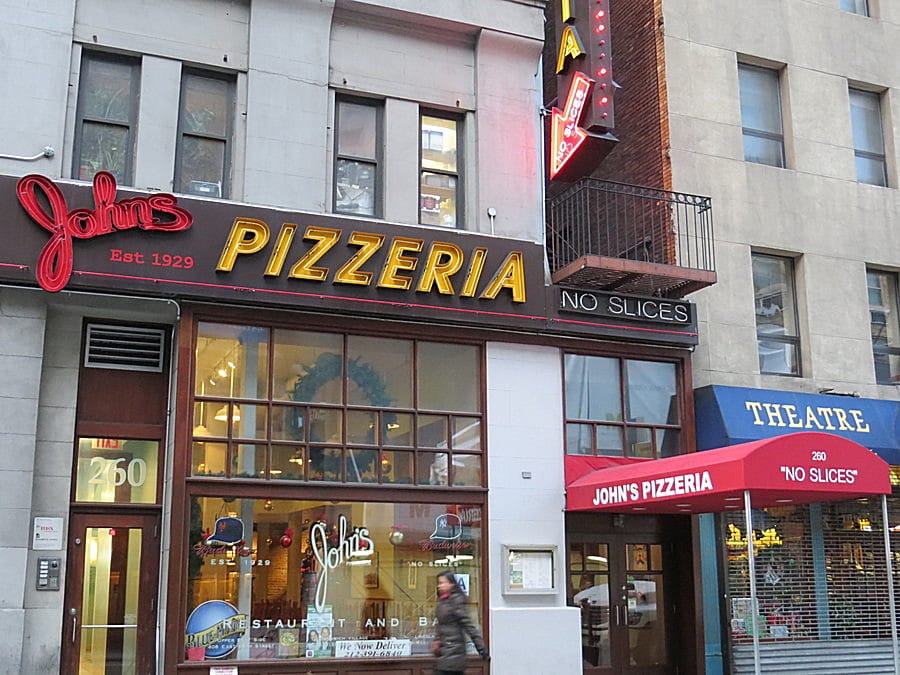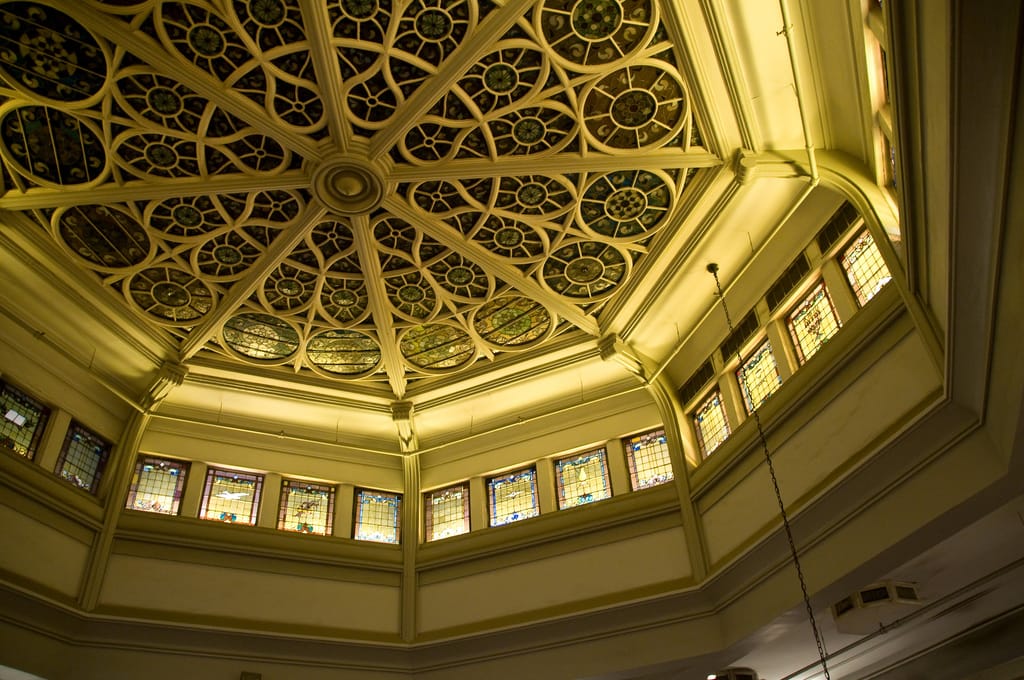From a Synagogue to a Pizzeria, an Alternative Tour of Stained Glass in NYC
Although it's an art form more associated with medieval cathedrals, there is stunning stained glass in New York City.

Although it’s an art form more associated with medieval cathedrals, there is stunning stained glass in New York City. Some of the most lustrous examples are found in museums — the Metropolitan Museum of Art’s “Autumn Landscape” (1923–24) by Tiffany Studios dazzles with its glimmering waterfall winding below fall trees; the Brooklyn Museum’s “Hospitalitas” (1906–07) by John La Farge has realistic depth in its depiction of a robed woman dropping flowers against a rich landscape of blue. The churches, synagogues, and spiritual spaces dotting the five boroughs also have illuminated masterpieces, including a 14th-century window on view in the Little Church Around the Corner in Murray Hill and Tiffany glass commemorating early settlers at Brooklyn’s Flatbush Reformed Dutch Church.
Alongside these highlights are lesser-known examples of historic and contemporary stained glass, out on public view if you know where to look.
Marc Chagall’s Peace Window
United Nations, East 46th Street and First Avenue, Manhattan
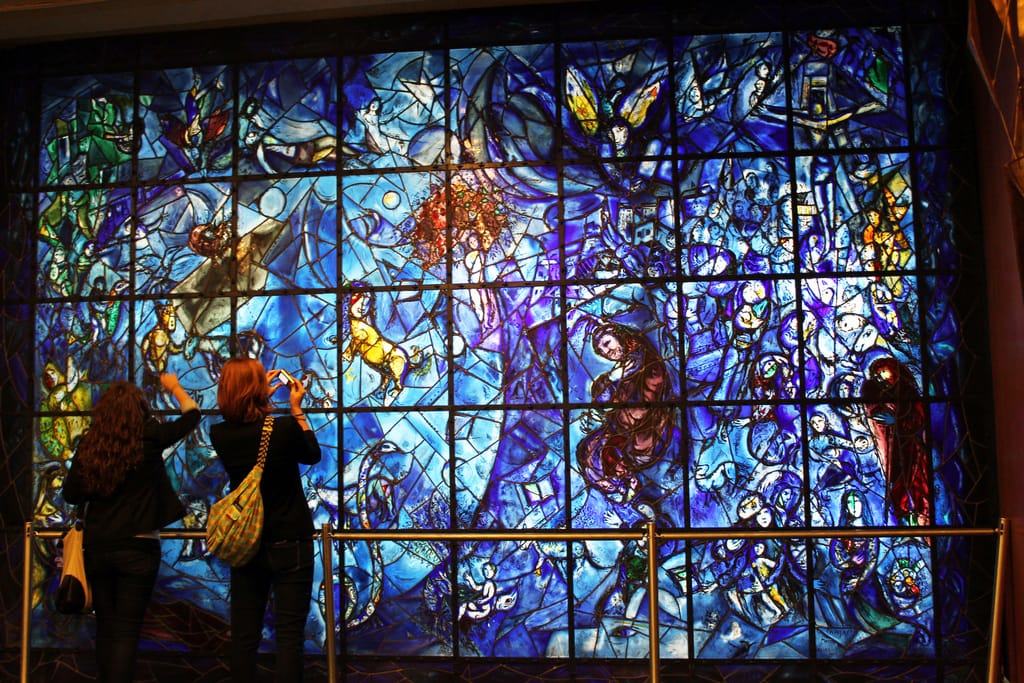
The 51-foot wide, 12-foot high “Peace Window” by Marc Chagall at the United Nations was dedicated in 1964 as a memorial to Secretary-General Dag Hammarskjöld, who died with 15 others in a 1961 plane crash in Ndola, Zambia. Chagall designed the window to include tributes to Hammarskjöld, such as music symbols referencing a favored composition (Beethoven’s Ninth Symphony), along with swirling figures representing peace and love against an iridescent blue background. The window was restored in 2001, and is currently installed in the UN visitor lobby.

Kiki Smith & Deborah Gans’s Star Window
Eldridge Street Museum, 12 Eldridge Street, Lower East Side, Manhattan
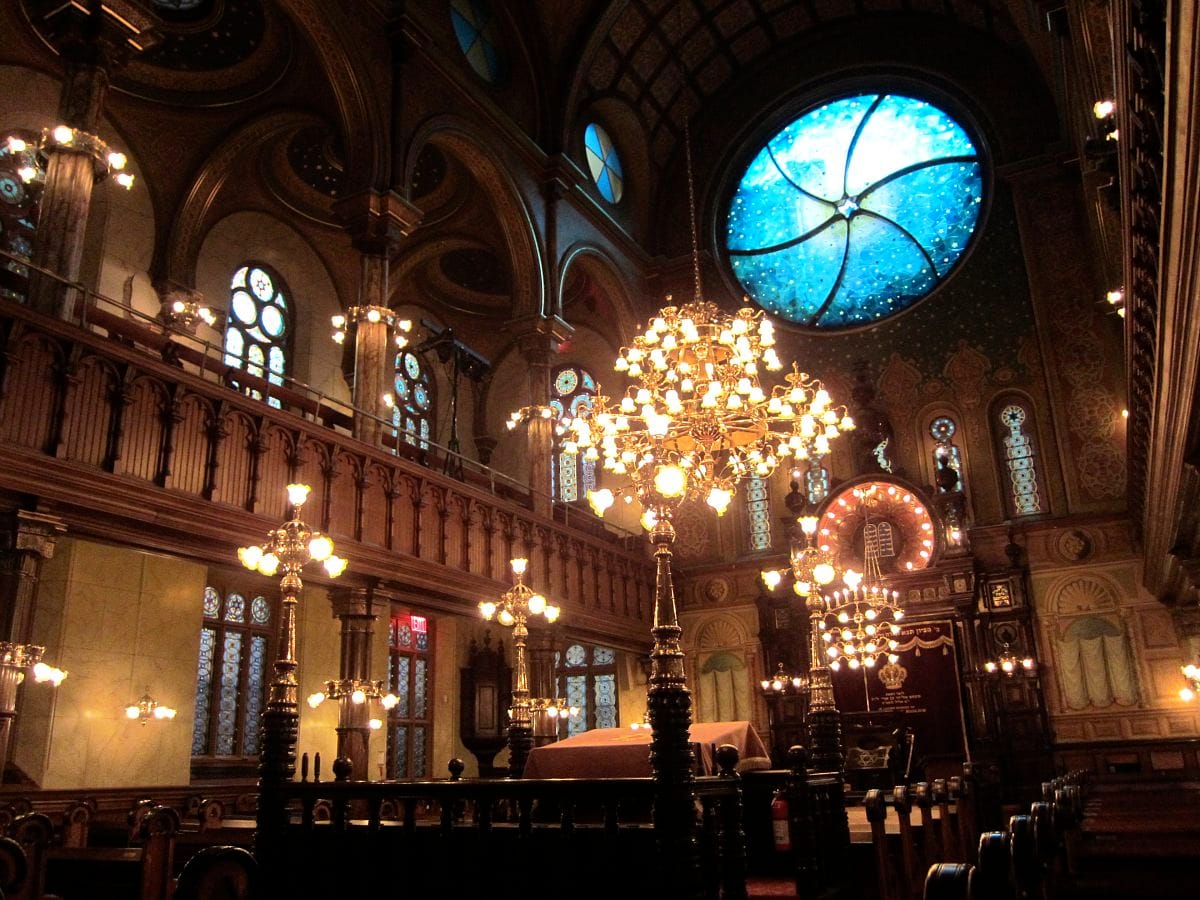
As part of an over-20-year restoration of the Eldridge Street Synagogue that turned it into the Museum at Eldridge Street, the empty circle overlooking the main hall needed to be filled. Problem was, there was no record of the 1887 synagogue’s original window. Instead, artist Kiki Smith and architect Deborah Gans designed a contemporary piece respecting the history and iconography of the oldest American house of worship for Eastern European Jews. Unveiled in 2010, the celestial window is made up of more than 1,200 glass pieces, with a Star of David at its center encircled by a blue vortex of yellow and black five-pointed stars.

City Hall Subway Station
Below Park Row and City Hall Park, Lower Manhattan
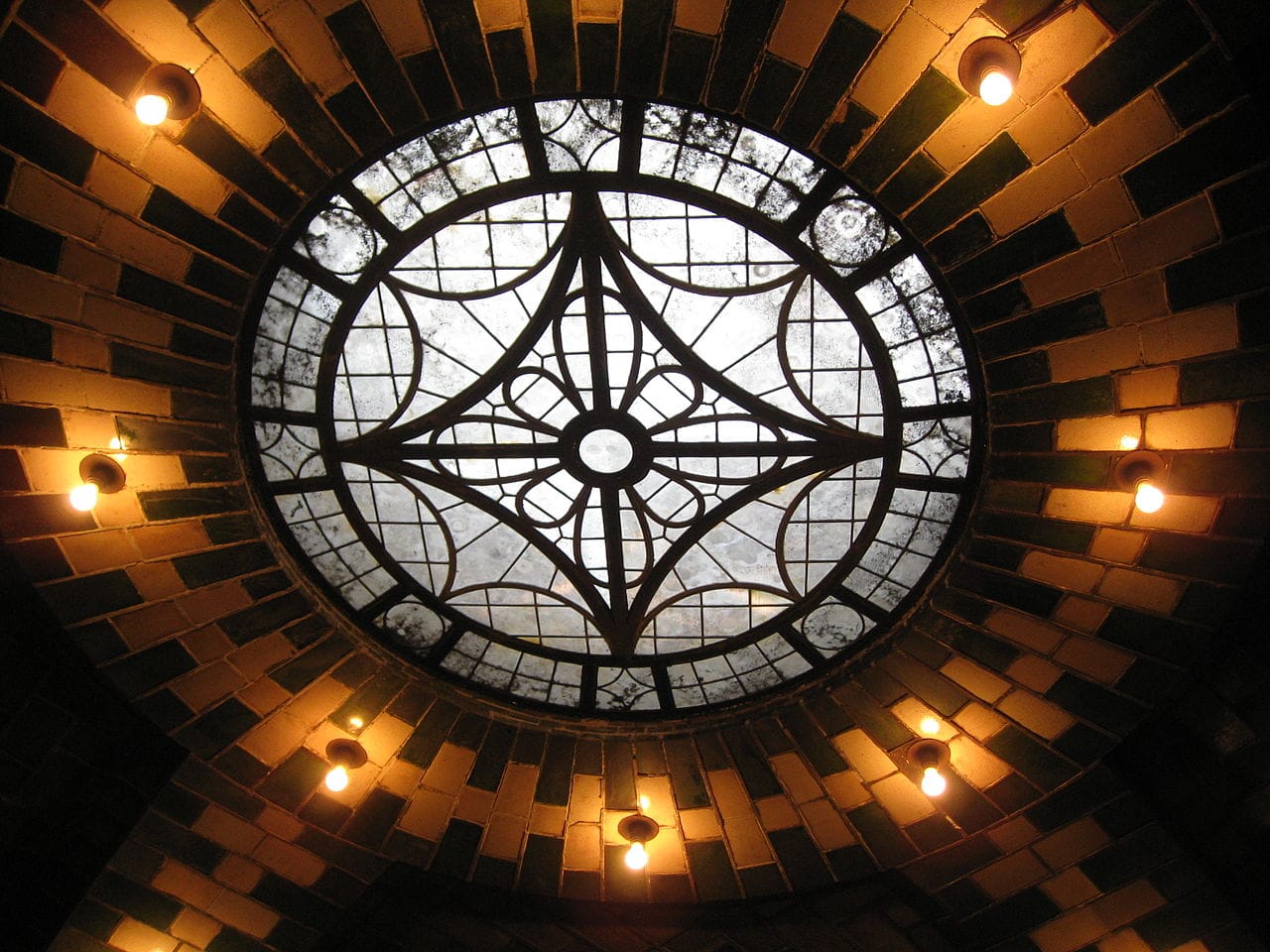
The skylights in the old City Hall subway station are more accurately leaded than stained glass, but they share a similar technique and are beautiful examples of early-20th-century design. The glass is joined by arching Guastavino tile ceilings and chandeliers, all abandoned since 1945, when the station’s short platforms rendered it obsolete. That means, unfortunately, that the glass windows are strictly off limits, unless you take the 6 train as it loops around from the new City Hall station or join a tour with the New York Transit Museum.
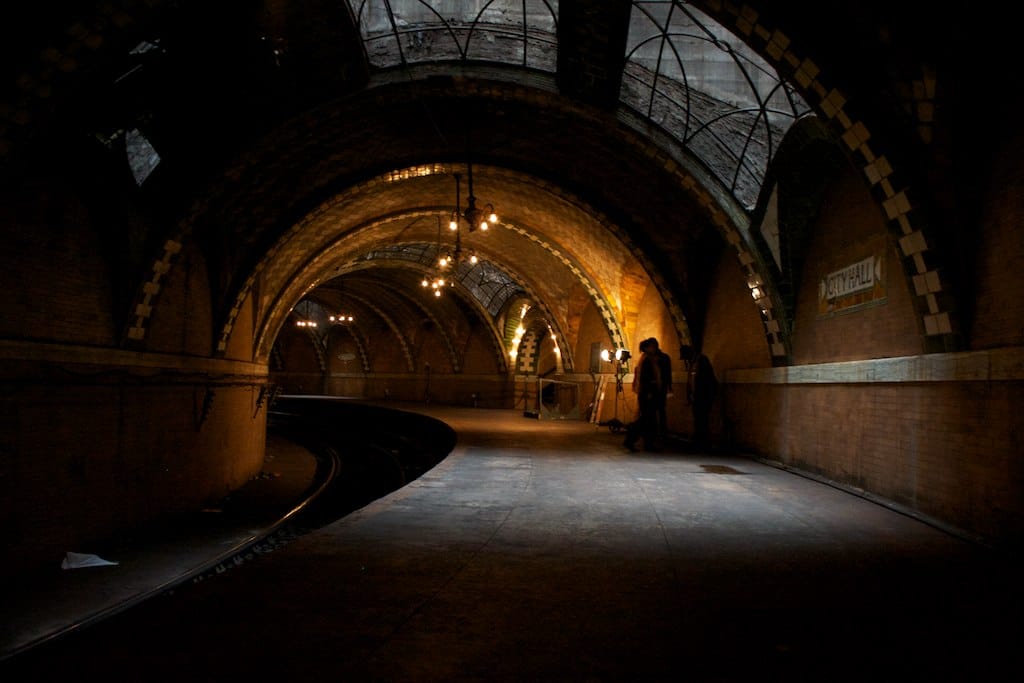

Tiffany Clock at Grand Central Terminal
89 East 42nd Street, Midtown, Manhattan
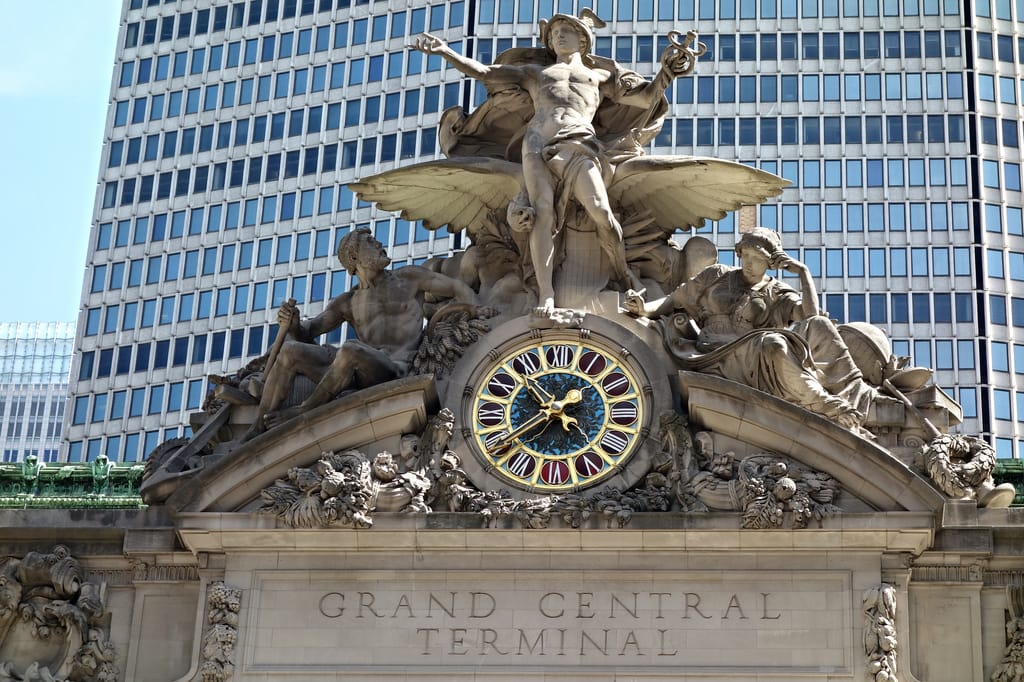
Many know the central brass clock in Grand Central Terminal with its opal face, yet outside, overlooking 42nd Street, is the world’s largest Tiffany stained glass clock. The piece is 13 feet in circumference, with an image of the sun against a blue background and the hours represented in white Roman numerals. Surrounding the clock are statues by French sculpture Jules-Félix Coutan: Minerva and Hercules on either side and Mercury above, gesturing to the city. The group was unveiled in 1914, and recently a 12-year restoration project by Rohlf’s Stained & Leaded Glass Studio restored the original splendor of the timepiece — no small feat, as conservation required navigating narrow ladders and passages leading up to the clock from inside the train station.
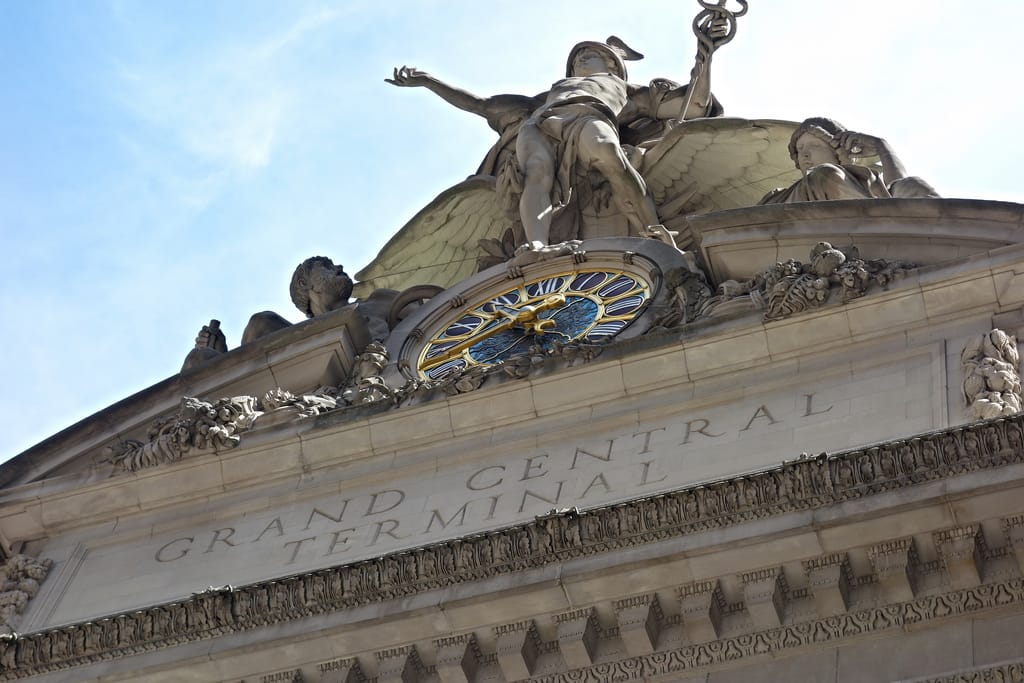
The Elevated MTA Stations
Throughout the NYC Subway
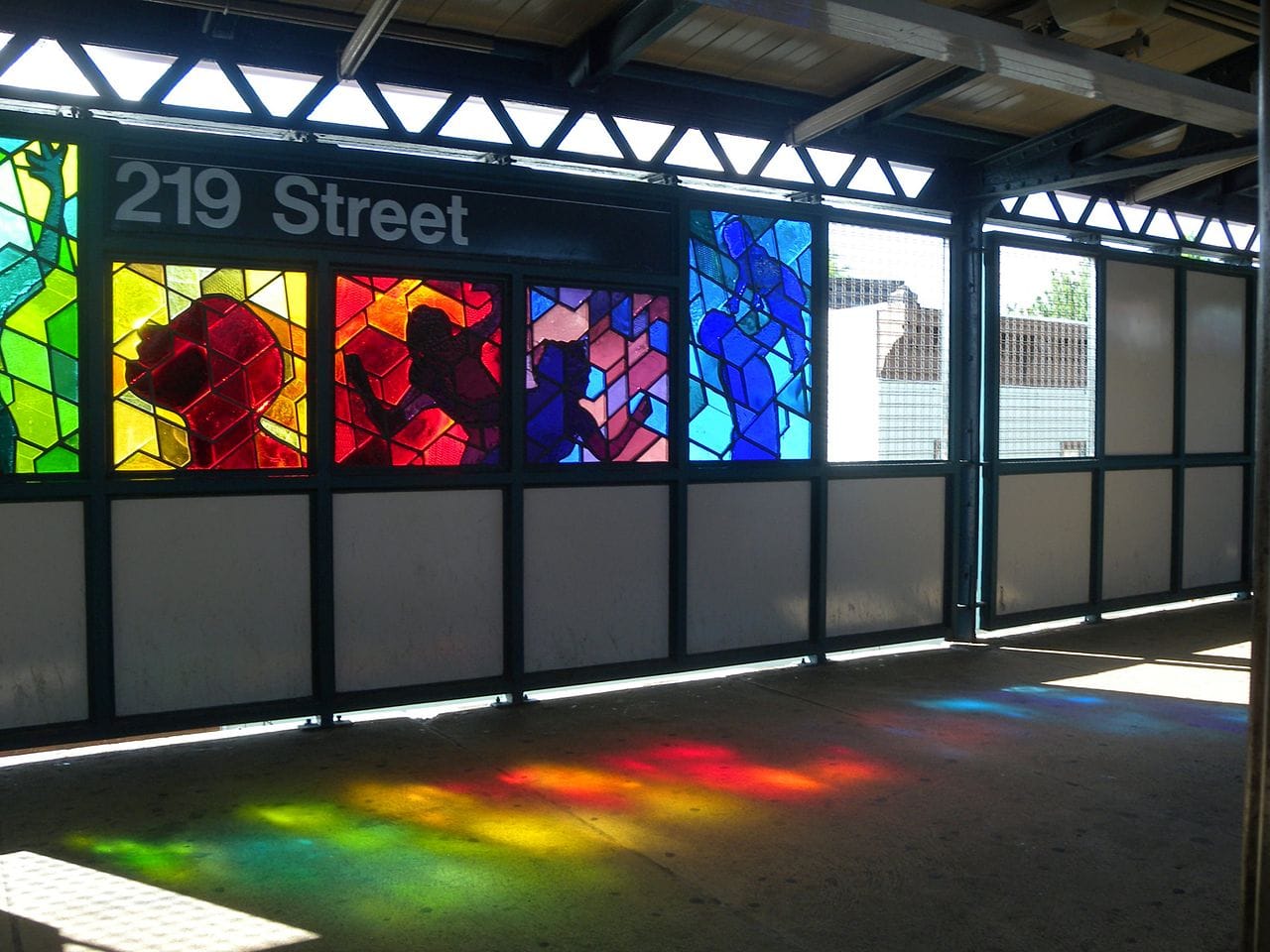
Art is scattered throughout the New York City subway system, facilitated by MTA Arts & Design, and this includes stained glass in many of the elevated stations of the Bronx and Queens. One of the last pieces created by Romare Bearden before his death in 1988 — the triptych “City of Glass” (1993) — is installed at Westchester Square-East Tremont Avenue.
Elsewhere in the Bronx, at Freeman Street on the 2 and 5 lines, Daniel Hauben created a faceted glass scene of a street with pedestrians and vendors underneath the elevated tracks. And in Queens, at 33 Street-Rawson Street on the 7, children’s book illustrator Yumi Heo has 30 faceted-glass panels in which the letters of the alphabet represent neighborhood places and themes, such as “A” for aqueduct and “D” for dragon boat races.

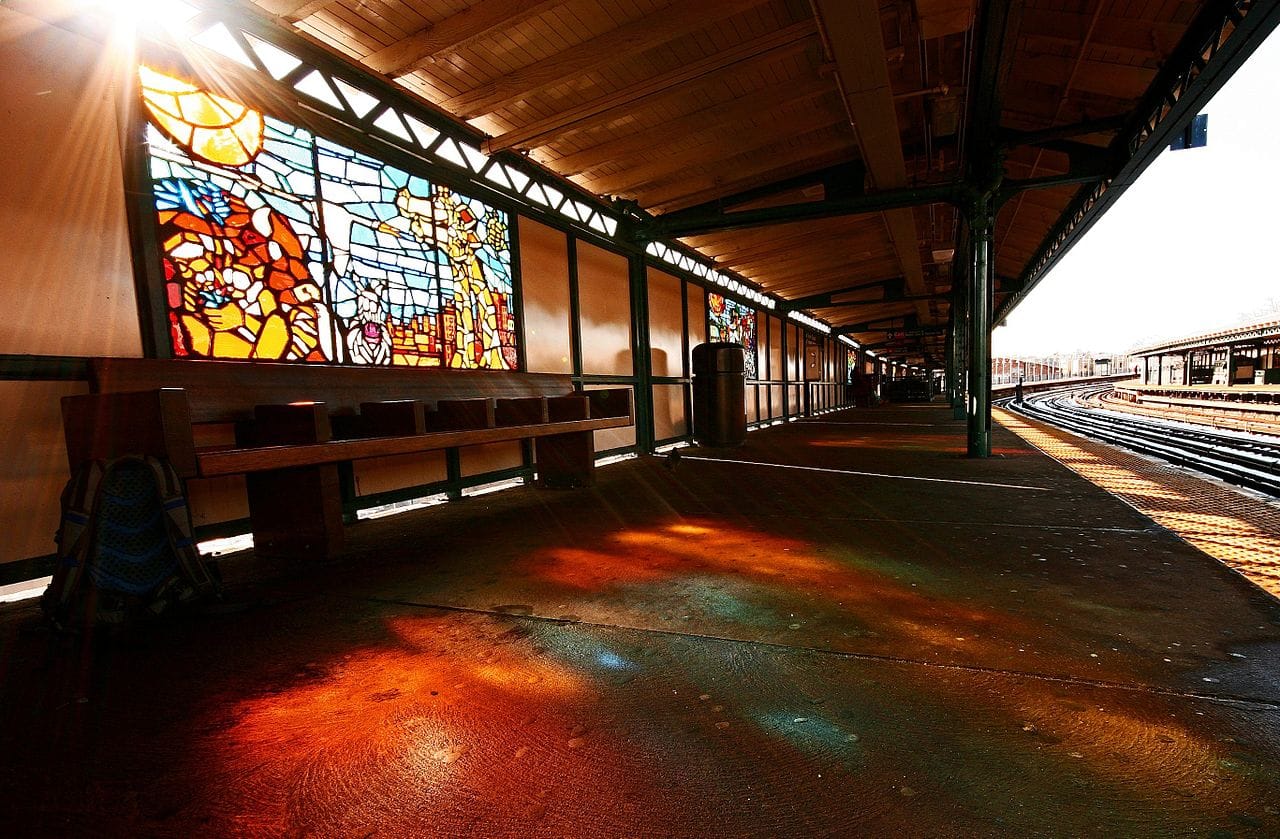
Woodlawn Cemetery
517 E 233rd Street, The Bronx

Many burial grounds have mausoleums with stained glass windows letting in light to the dead. However, Woodlawn Cemetery in the Bronx is almost unrivaled in the density of expertly crafted glasswork from the likes of Tiffany Studios and John La Farge. Anyone who rides the 4 train to the end of the line can stroll around the roughly 1,300 private mausoleums and take a look through the doors to see mourning angels, bucolic scenes, and religious tableaux just as stunning in execution as what you’d find in a museum. Although these private tombs are locked, except during sporadic cemetery tours, one of the giant Tiffany windows was recently on view in the Sylvan Cemetery exhibition at Columbia University.

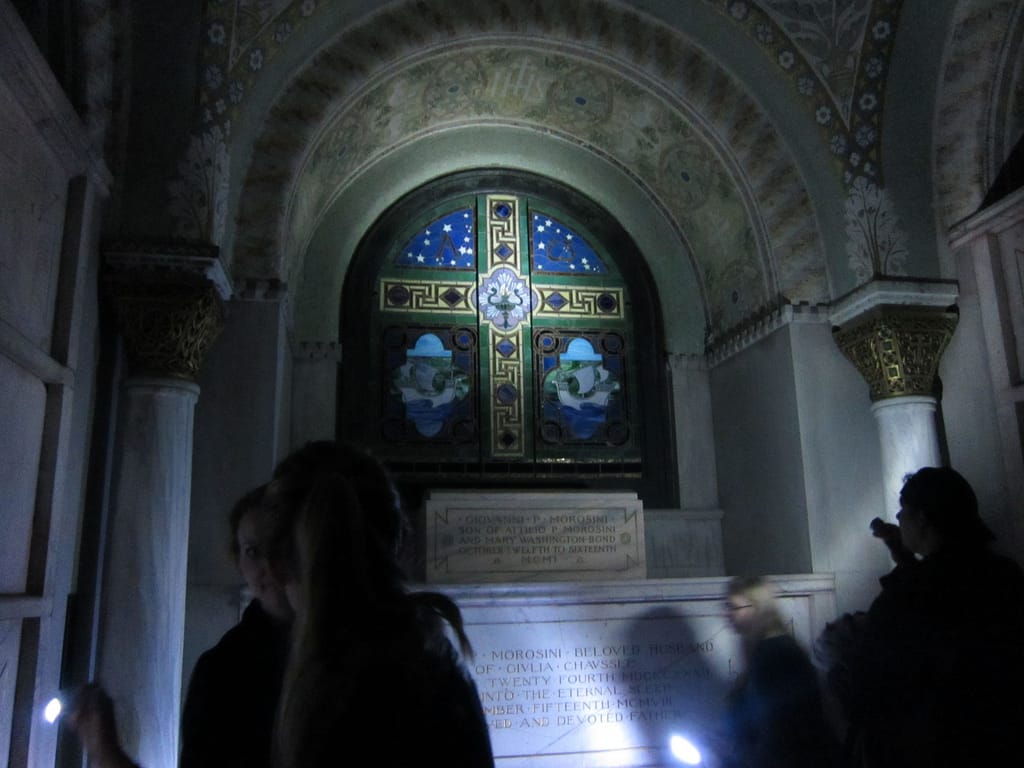
John’s Pizzeria
260 West 44th Street, Theater District, Manhattan
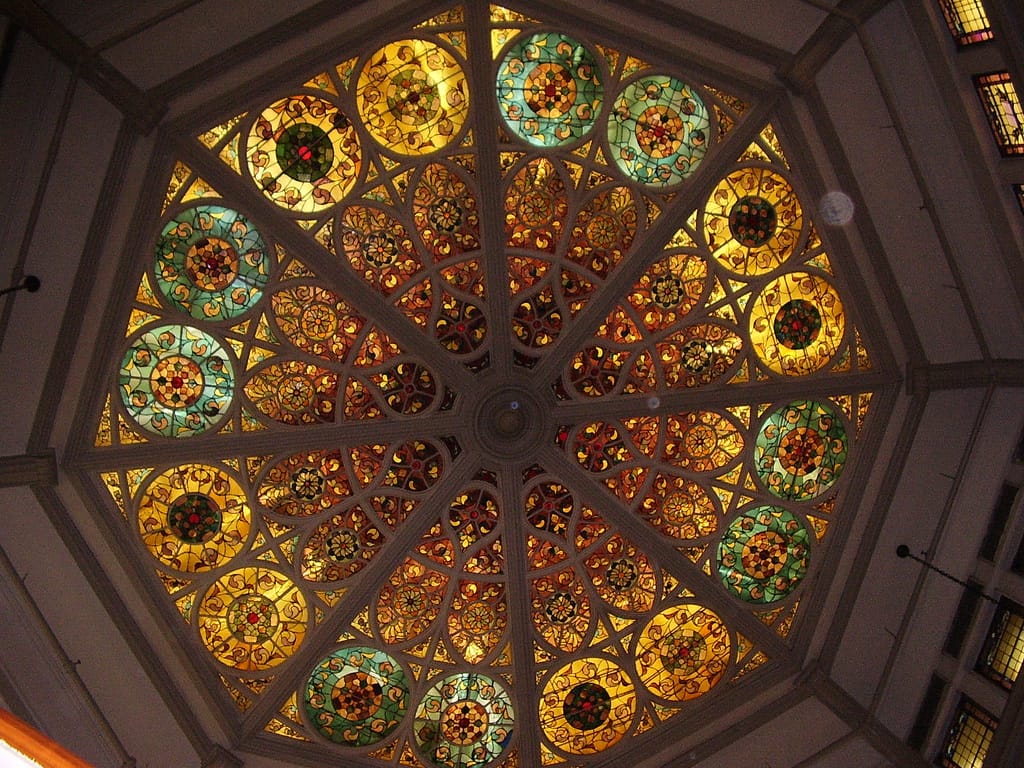
If you end your stained glass tour famished, swing by Times Square, and don’t judge John’s Pizzeria by its bland exterior. Inside is one of the most beautiful ceilings in all the city. The space on West 44th Street was once the Gospel Tabernacle Church, opened in 1888 and later abandoned and left to decay. It was revitalized as a pizza joint by entrepreneur Madeline Castellotti. The huge glass ceiling was preserved, and quietly survives as one of the city’s biggest.
